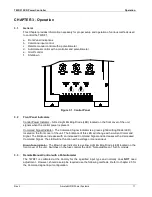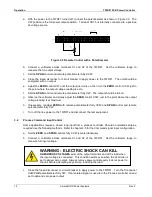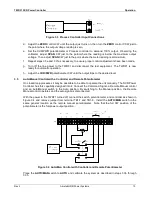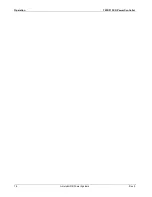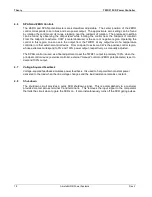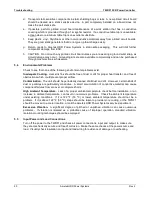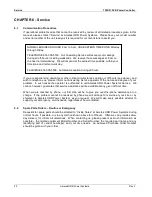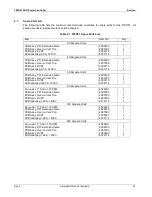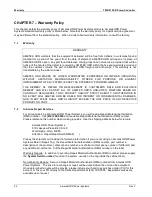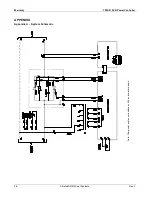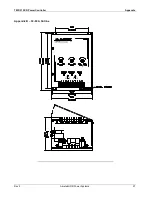
TWRF1 SCR Power Controller
Theory
Rev 2
Ametek HDR Power Systems
17
CHAPTER 4 - Theory
4.1
Functional Description
The main function of the TWRF1 is to control the amount of power delivered to a load. The TWRF1
accomplishes this by controlling the portion of each input cycle for which power is delivered.
The SCR is either on or off and conducts in one direction when turned on. Because the SCR only
conducts in one direction, two SCR’s are connected in “inverse parallel” configuration, Figure 4.1. A
small gate signal is applied to turn on the SCR. Once the SCR is turned on, it will remain On until the
current through the SCR goes below the holding current level.
For Phase angle firing each pair of Inverse Parallel SCR’s is turned on for a variable portion of the
half-cycle that conducts. This advancing or delay of the firing angle will regulate the power and is used
to control fast responding loads.
Figure 4.1 AC Switch and SCR On-time
4.2
Overview of the TWRF1
The following paragraphs provide a functional description of the digital firing control circuit, pulse-train
firing, phase-lock loop, SPAN and ZERO controls, voltage-squared feedback, shutdown, and soft-start
circuitry.
4.3
Digital Firing Control Circuit
Firing (gating) of the SCRs is controlled by a digital firing control circuit synchronized to the line
frequency (50 or 60 Hz). The firing control circuit may be manually controlled by the built-in ZERO
control or a remote potentiometer. Automatic control may be from a temperature or process controller
that provides a demand-proportional low-level voltage or milliampere output signal. The firing control
circuit may also be turned on and off by an external switch or relay contacts. (Chapter 4 discusses
some external control methods.)
4.4
Pulse-Train Firing
The output of the TWRF1 to the SCRs consists of a pulse-train of approximately 17 kHz. This means
that for every cycle of controlled output, the SCRs would receive approximately 142 trigger pulses,
which will ensure constant gating during the “on” period of the TWRF1’s output. This also ensures that
the SCR is gated on in case of a mid-cycle turnoff.
4.5
Phase-Lock Loop
When the output of the oscillator is locked to the input signal, it is said to be “locked” in phase. The
control voltage is such that the frequency of the voltage controlled oscillator is exactly equal to the
frequency of the input signal. For each cycle of input there is one cycle of oscillator output. By this
method, the TWRF1’s output will be held at 50 Hz or 60 Hz, depending on configuration. The input
signal is filtered, then compared to the oscillator, improving noise immunity over conventional sync
circuits.
Summary of Contents for TWRF1 SCR Series
Page 6: ...Table of Contents TWRF1 SCR Power Controller iv Ametek HDR Power Systems Rev 2...
Page 8: ...Safety Instructions TWRF1 SCR Power Controller 2 Ametek HDR Power Systems Rev 2...
Page 12: ...Description TWRF1 SCR Power Controller 6 Ametek HDR Power Systems Rev 2...
Page 16: ...Operation TWRF1 SCR Power Controller 10 Ametek HDR Power Systems Rev 2...
Page 22: ...Operation TWRF1 SCR Power Controller 16 Ametek HDR Power Systems Rev 2...
Page 35: ...Notes...
Page 36: ...530 Lakeview Plaza Blvd Ste C Worthington Ohio 43085 USA...









